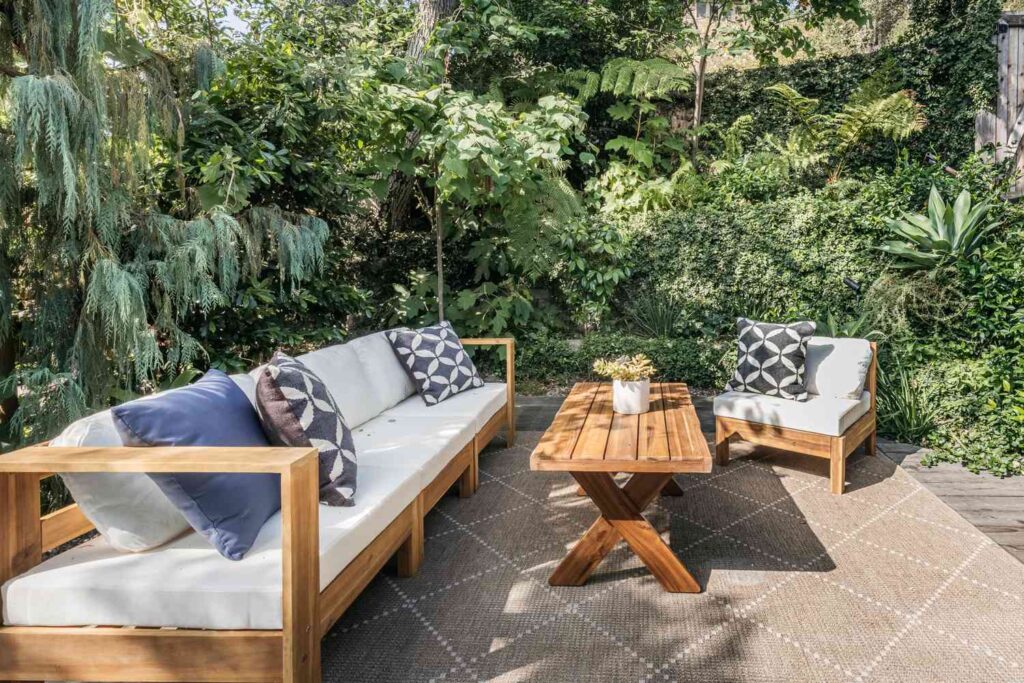What is a Paver Patio?
A paver patio is an outdoor living space made of individual brick or stone units that are laid on a flat surface and held together with sand-filled joints. Paver patios provide homeowners with a beautiful and functional outdoor living space that can be customized to their liking.
They come in a wide range of styles, colors, and designs that can complement the style of any home. The benefits of a paver patio include enhancing the curb appeal of the home, improving drainage, creating a functional and enjoyable outdoor living space, and adding value to the property.
Benefits of a Paver Patio
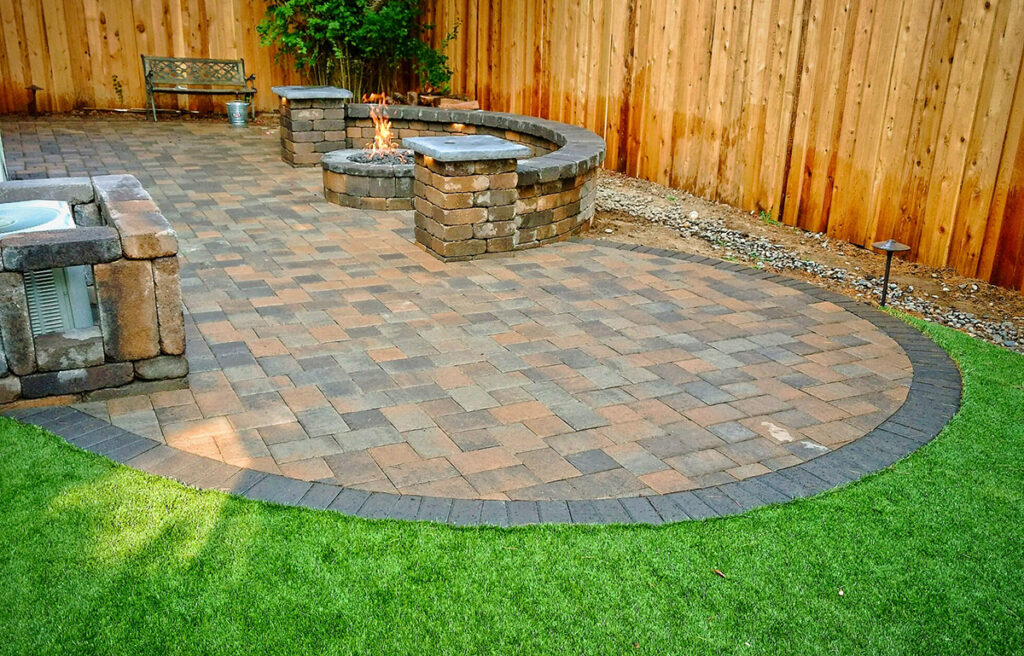
Investing in a paver patio for your outdoor living space comes with a wide range of benefits. Not only do paver patios enhance the visual appeal of any property, but they are also highly durable and require minimal maintenance. Plus, the many customization options available with paver patios allow homeowners to create unique and personalized outdoor spaces that meet their specific needs and preferences.
With paver patios, there are numerous customization options to choose from. From the color, shape, and size of the pavers to the design and layout of the patio, there are countless ways to create a personalized and unique outdoor space. This allows homeowners to enhance their outdoor living area to fit their specific style and taste, creating a beautiful and inviting space that they can enjoy for years to come.
Compared to traditional concrete pads, pavers are a much better investment. Concrete pads can crack or shift over time, resulting in costly repairs and maintenance. Pavers, on the other hand, are more durable and can withstand harsh weather conditions, heavy traffic, and other wear and tear factors. Plus, pavers are a more environmentally friendly choice as they allow for better water drainage and help to reduce runoff.
Another significant benefit of a paver patio is the added value it brings to a home. A well-designed and properly installed paver patio can greatly enhance the overall value of a property, making it a worthwhile investment for homeowners. Not only can it increase the property’s resale value, but it also provides an attractive and functional outdoor living area that can be enjoyed for many years.
In summary, a paver patio offers a wealth of benefits to homeowners, including customization options, durability, low maintenance, and added value. With all these benefits, a paver patio is undoubtedly an investment that will give you the best return.
Factors Affecting Cost
The cost of a 20×20 paver patio can vary depending on several factors. The square footage of the patio, the type of paver material used, labor costs, additional materials, drainage issues, and curb appeal all contribute to determining the overall cost of the project. Understanding these factors and how they affect the cost can help homeowners plan and budget accordingly. In the following sections, we will discuss each factor in more detail to give you a better idea of how much your 20×20 paver patio project may cost.
Square Footage: The size of the patio is a significant factor in determining the cost. The larger the patio, the more materials and labor required, which will increase the overall cost of the project. Conversely, a smaller patio may require less material and labor, resulting in a lower cost.
Type of Paver: The type of paving material used can also affect the cost of the project. Natural stone pavers are often more expensive than concrete pavers, clay brick, or porcelain pavers. However, natural stone pavers provide an elegant look, which may be worth the additional cost for some homeowners.
Labor Costs: Labor costs also play a crucial role in determining the overall cost. The installation process of a paver patio requires skilled labor, which can be costly. Rates vary depending on the region, and it is generally recommended to hire a professional paver installation company for the best results.
Additional Costs: Additional materials such as sand, reinforcement grids, and edge restraints may be required to install a paver patio properly. Homeowners should also consider the cost of renting or purchasing equipment such as a compactor or saw, which may be necessary for the installation process.
Drainage Issues: Proper drainage is essential for any outdoor living space to prevent water from pooling or causing structural damage. If the site has poor drainage, additional measures such as installing a drainage system or using permeable pavers may be necessary, which can increase the overall cost of the project.
Curb Appeal: The aesthetic appeal of a paver patio is a significant factor for some homeowners, as it can greatly enhance the overall look and feel of the outdoor living area and add resale value to the property. Considerations such as the patio’s color, pattern, and design, as well as incorporating features such as lighting or built-in seating, may increase the cost of the project.
Square Footage
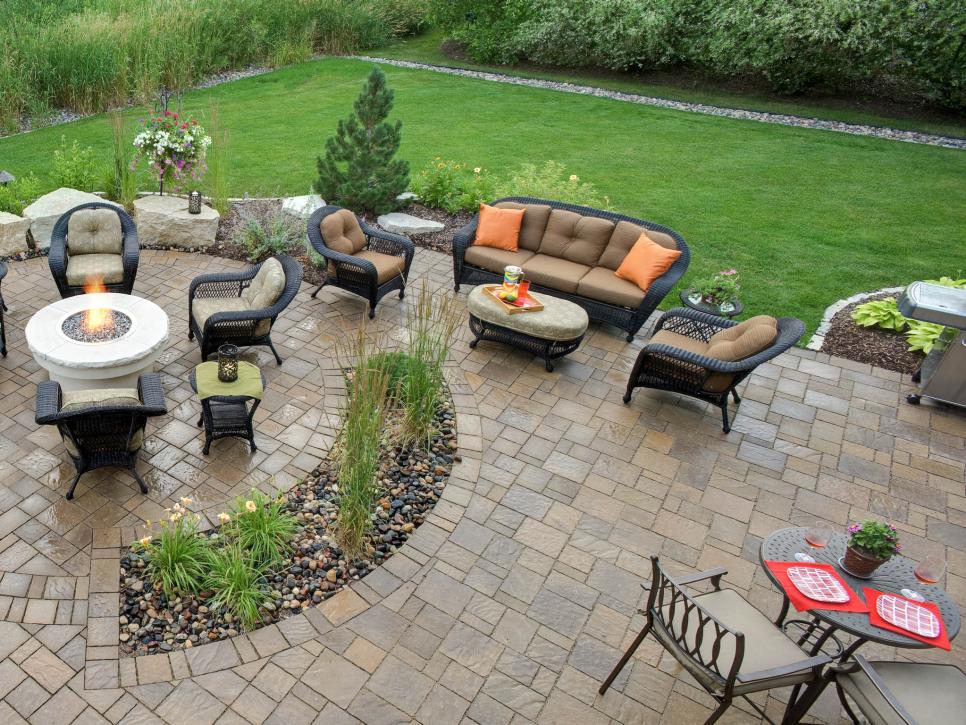
The square footage of a patio is a crucial factor in determining the overall cost of a 20×20 paver patio project. It’s simple math – the larger the patio, the more materials and labor are required, which will increase the overall cost. Conversely, smaller patios may require less material and labor, resulting in a lower cost.
When it comes to calculating the cost per square foot of a patio project, the average cost ranges from $8 to $20. However, it’s important to note that this estimate is dependent on several factors. The type of stone used, along with labor costs and additional materials required can all significantly impact the final cost.
Larger projects are often more cost-effective in terms of the cost per square foot. The increased quantity of materials may lead to economies of scale, which can reduce the cost of both the materials and labor.
Smaller patios, however, can still be costly due to the need for more intricate designs and specialized materials. This can lead to a higher cost due to the need for more labor and materials.
In summary, the square footage of a patio is a significant determinant in the overall cost of a 20×20 paver patio project. Homeowners should assess their needs and preferences carefully to determine the best patio size for their outdoor living space.
When considering the cost, it is essential to keep in mind factors such as labor costs, type of stone, and the complexity of the design. The top 5 most relevant keywords for this section are square footage, patio size, labor costs, average cost, and type of stone.
Type of Paver
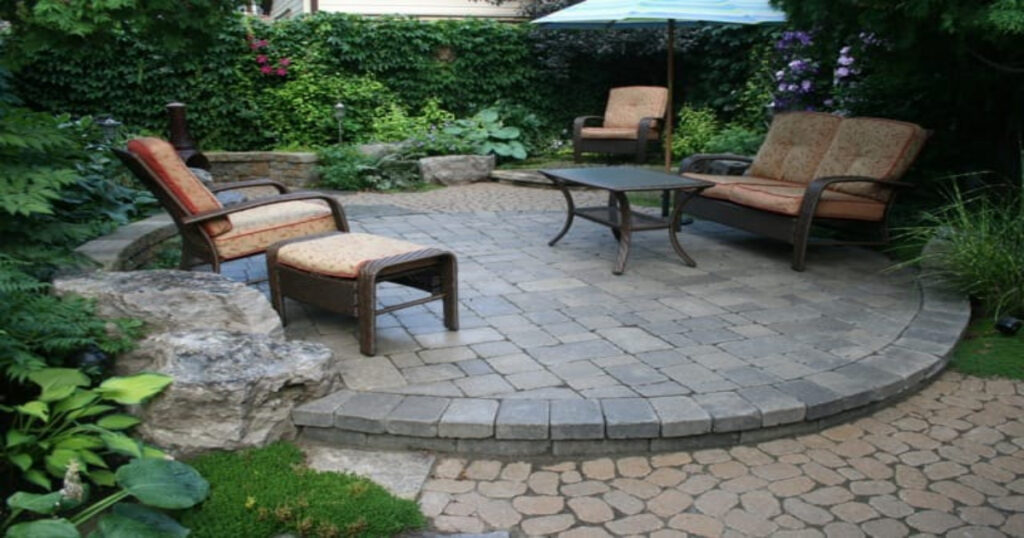
When it comes to patio pavers, there are various types to choose from. When making a decision, it is vital to consider the durability, cost, and design of each type. The top three common types of pavers are concrete, clay brick, and natural stone.
Concrete pavers are an affordable option compared to other pavers. They are versatile and come in various sizes, colors, and designs. Although they are more susceptible to damage from freeze-thaw cycles, they are still a popular option for patio installations. On average, concrete paver costs range from $3 to $7 per square foot.
Clay brick pavers are more expensive than concrete pavers, but they have a more extended lifespan compared to concrete. They add a classic and elegant element to any patio. They are strong enough to withstand extreme weather conditions and heavy usage, which makes them ideal for patio installations. On average, brick paver costs range from $10 to $20 per square foot.
Natural stone pavers are the most durable patio paver option. They can endure heavy usage and extreme weather conditions with minimal damage. They come in various shapes and sizes and have a natural, rustic appearance. Natural stone pavers tend to be the most expensive option with an average cost of $15 to $30 per square foot.
In conclusion, choosing the right type of paver can make or break a patio installation. Homeowners should assess their needs and budget to choose the most suitable type of patio paver. The three most common types of pavers are concrete, clay brick, and natural stone, and each has its unique benefits and costs to consider. The top 5 keywords to include in this section are type of paver, concrete pavers, clay brick, natural stone, and cost.
Labor Costs
When planning the cost of a 20×20 paver patio project, labor costs must be taken into consideration. These costs typically account for 45% of the overall project costs. The variations in labor costs can be attributed to various factors such as the type of paver used, the level of complexity involved in the installation process, and the experience of the installers.
Depending on the complexity of the project, the amount of labor required can vary significantly. For example, if an installer needs to dig up and level the ground before installing the pavers, it will take longer to complete and likely cost more.
Additionally, the type of paver used can also impact labor costs. Natural stone pavers, for instance, tend to require more time-consuming installation procedures and may require hiring an experienced installer, which impacts the labor cost.
When it comes to installation rates, professionals who charge by the square foot typically charge between $5 and $15 per square foot. Meanwhile, installers who charge by the hour can range from $50 to $80 per hour. It’s important to note that those who charge by the hour typically include additional expenses, such as the use of tools and equipment.
Finding a professional with the right experience is also crucial in keeping labor costs in check. Installers with years of experience will have encountered various installation problems and will be better equipped to handle issues should they arise. While they may charge a higher hourly rate, they will likely complete the project quicker and make fewer mistakes.
In summary, labor costs are an essential factor in the pricing of a 20×20 paver patio project. It is important to consider the type of paver, complexity of the installation process, and experience of the installer when estimating labor costs. The top 5 keywords to include in this section are labor costs, installation process, complexity of project, average labor rates, and experience of installers.
Additional Costs
When budgeting for a paver patio, it’s important to consider the additional costs that can contribute to the overall project cost. These expenses can vary depending on the desired features and upgrades for the patio. Some common additional costs to consider include landscaping, coverings, plumbing, and electrical add-ons.
Landscaping is an essential factor to enhance the overall look of the outdoor living space. Including features such as planters, flowers, and trees can create a more natural and inviting atmosphere. However, it’s essential to keep in mind that these additional elements come at an added cost.
Coverings are another item that can increase the cost of a patio project. They provide shading and protection from the elements, allowing for year-round use of the patio. Patio covers come in various materials such as wood, aluminum, or vinyl, with each having its own cost range.
Plumbing and electrical add-ons can increase the functionality of the patio. For example, including an outdoor sink or refrigerator can make hosting outdoor events more accessible. Wiring for lighting and speakers can also improve the ambiance of the patio and increase its use during evening hours.
It’s also necessary to factor in the cost of the materials and tools needed for the installation process. When purchasing materials, the cost of pavers, sand, and any rental equipment should be taken into account. Additionally, the patio’s location, material, shape, paver design, and intended use can affect the total cost of the project. A patio located on uneven terrain may require extra preparation and leveling, for example, and the type of paver selected can impact the cost.
In summary, a paver patio project can cost more than initially anticipated due to additional items and upgrades such as landscaping, coverings, plumbing, and electrical add-ons. The cost of materials and tools also needs to be taken into consideration.
Other factors such as the patio’s location, shape, material, and design can also impact the overall cost of the project. When planning for a paver patio project, it’s essential to consider all of the possible additional costs and create a comprehensive budget to ensure no unexpected expenses arise. The top 5 keywords to include in this section are: landscaping, coverings, plumbing, electrical add-ons, and materials.
Drainage Issues
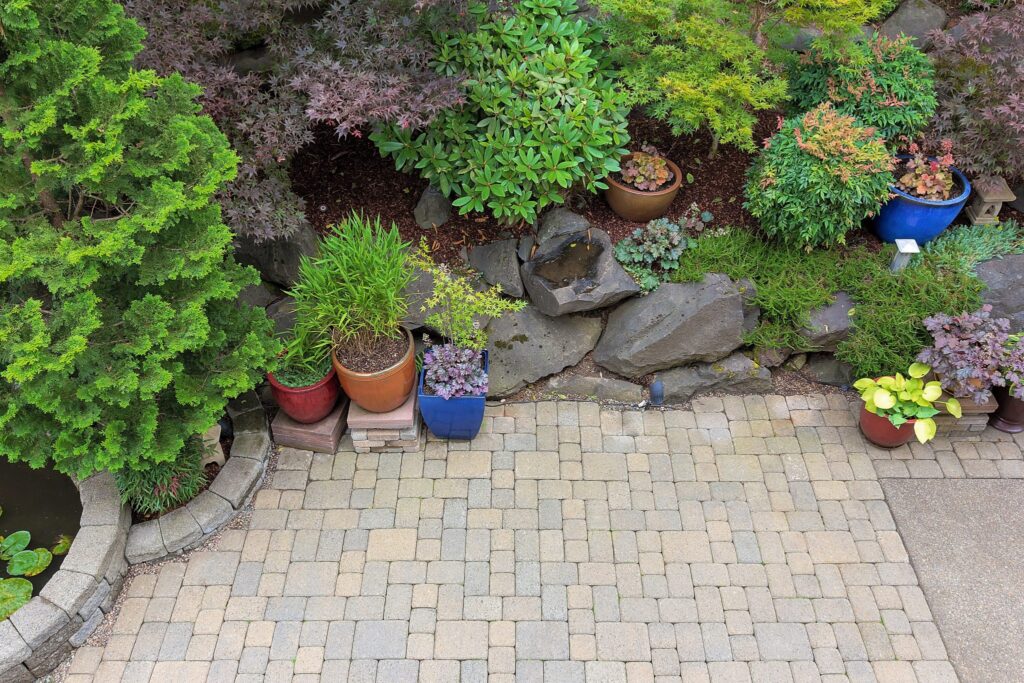
When installing a paver patio, one potential issue that may arise is poor drainage. Without proper drainage, the patio’s base can become unstable over time, leading to cracks, unevenness, and even damage to the pavers themselves. It is essential to consider the condition of the soil and the patio’s size and location when determining the proper base materials for drainage.
One common solution to drainage issues is the use of base materials that allow water to flow easily through them. Geotextile fabric, class II road base, and bedding sand are all options that can aid in proper drainage.
These materials are placed at the bottom of the excavation area before any pavers are installed. The cost of using these materials averages between $0.10 and $0.80 per square foot, depending on the specific material used and the size of the patio.
In some cases, additional drainage solutions such as pipes may be necessary for proper water management. Drainage pipes are designed to channel water away from the patio area, preventing water buildup and flooding. Incorporating drainage pipes into the installation process may come with an added cost, as it requires additional materials and labor.
When planning for a paver patio project, it’s important to consider potential drainage issues that may arise and plan accordingly. Choosing the right base materials, such as geotextile fabric, class II road base, and bedding sand, can help promote proper drainage and prevent issues down the line.
Incorporating drainage pipes may be necessary in some cases, and their cost should be factored into the overall budget. The top 5 keywords to include in this section are: drainage issues, base materials, geotextile fabric, class II road base, and bedding sand.
Curb Appeal
A well-designed paver patio not only adds to the functionality of an outdoor living space but also increases the value of a home. It can provide a great spot for socializing and relaxation, and it’s a stylish way to add a practical extension to your home. A paver patio can be customized to complement a home’s architecture and design elements, giving it an undeniable curb appeal.
One area where pavers can particularly impact curb appeal is the front porch. A front porch is the first impression that someone has of a home, and updating it with trendy brick pavers can elevate the home’s exterior appearance. A chic and modern paver design can take it from bland to beautiful in no time, giving it an upscale, inviting look that will be sure to impress anyone who passes by.
Incorporating paver walkways and courtyards into the overall design is another great way to enhance curb appeal. Walkways can connect outdoor living spaces and provide a flow between different areas of a property. They also add functionality and make it easy to move around the yard, especially when entertaining guests.
Meanwhile, courtyards can create a charming outdoor space that’s perfect for relaxing, dining, or just enjoying the outdoors with family and friends. A well-designed paver courtyard can create a cozy, intimate space while adding an architectural element that can impress potential buyers.
In conclusion, adding a paver patio to an outdoor living space can add both functional and aesthetic value to a home, ultimately increasing the home’s value. The front porch, walkways, and courtyards can all benefit from pavers, creating beautiful spaces that are inviting, trendy, and highly desirable. When it comes to updating your outdoor living space, it’s hard to go wrong with paver design. The top 5 keywords to include in this section are: home value, front porch, trendy brick pavers, walkways, and courtyards.
Types of Pavers & Materials
When it comes to adding a paver patio to your outdoor living space, there are many types of pavers and materials to choose from. Each material offers unique aesthetic properties and functional benefits. Concrete pavers are popular and versatile, as they come in a variety of colors, shapes, and sizes. Natural stone pavers offer a timeless and earthy feel, with options such as granite, slate, and sandstone.
Clay brick pavers add a classic, traditional look to any outdoor space and are highly durable. Finally, concrete slabs offer a flat surface that’s excellent for modern or minimalist designs with clean lines. The choice of material depends on personal style, budget, and desired functionality, but all of these options can create a beautiful, long-lasting, and functional paver patio.
Concrete Pavers

Concrete pavers are a popular and affordable option for homeowners looking to build a patio. Made from molded cement, these pavers are a versatile and customizable option that can add both beauty and functionality to outdoor living spaces. Concrete pavers come in a wide variety of shapes, sizes, colors, and textures, making them easy to customize and ideal for DIY projects.
When it comes to cost, concrete pavers are generally more affordable than other materials such as natural stone. The cost of concrete pavers can vary widely depending on several factors, including the size of the pavers, the color and texture chosen, and the complexity of the design. However, regardless of the chosen design, concrete pavers are still one of the most cost-effective options on the market.
One of the main advantages of using concrete pavers is their high level of customizability. The ability to choose the size, shape, color and texture of your pavers offers a great deal of flexibility for those looking to create a unique outdoor living space. Additionally, concrete pavers are durable, require minimal maintenance, and have a low environmental impact.
However, it’s important to keep in mind that concrete pavers may not have the same visual appeal as natural stone pavers. While they are available in a variety of colors and textures, they may not have the same level of organic beauty as natural materials. Nevertheless, concrete pavers are still an excellent option for those seeking affordability, durability, and customizability in their patio projects.
Natural Stone Pavers
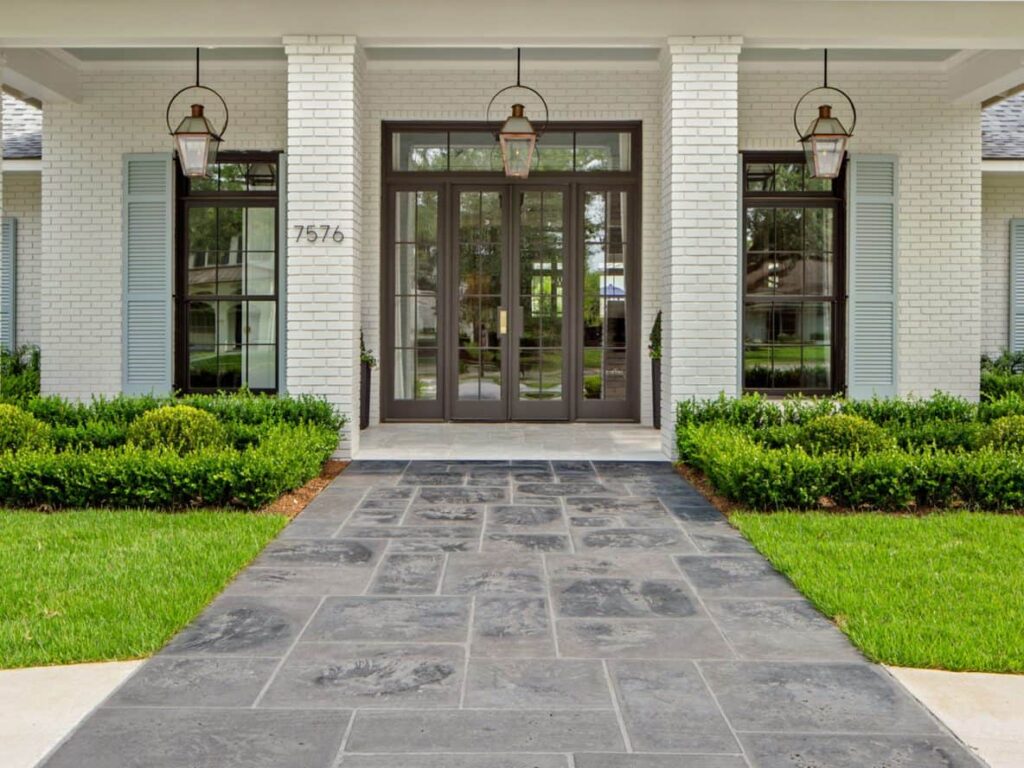
Natural stone pavers are an excellent option for homeowners looking to add a touch of elegance and uniqueness to their outdoor living space. There are various types of stones that can be used for patios, including limestone, sandstone, granite, slate, and flagstone. Each of these types of natural stone has its own unique texture, color, and finish, giving homeowners the freedom to select the one that best suits their overall design concept.
One of the main benefits of natural stone pavers is their exceptional durability. These pavers can handle heavy foot traffic, resist weather damage and maintain their color and texture for many years with little to no maintenance, making natural stone pavers a worth investment.
Moreover, natural stone pavers have distinct and unique variations that cannot be replicated by humanmade materials. No two stones are identical, meaning that natural stone pavers will add a unique touch to any outdoor living space. Their natural surface and texture also make them non-slip, which makes them an ideal option for pool areas and outdoor kitchens.
When it comes to pricing, natural stone pavers are the most expensive option due to their optimum durability and unique beauty. For example, marble pavers can cost between $14 to $20 per square foot, while tumbled granite averages $10 to $20 per square foot, and flagstone typically comes in at $5 to $15 per square foot. Contact nearby paver installation companies for a more detailed pricing or to get quotes for your project.
It’s crucial to purchase locally available stones to avoid exorbitant shipping costs. It’s also worth noting that the cost of natural stone pavers might vary depending on the type of stone, size, design, and complexity of installation.
In conclusion, while natural stone pavers are the most expensive option, they offer a unique blend of beauty and durability that cannot be found in any other material. The varying types of stone used for patios allow homeowners to select the one that best suits their style and budget.
Clay Brick Pavers
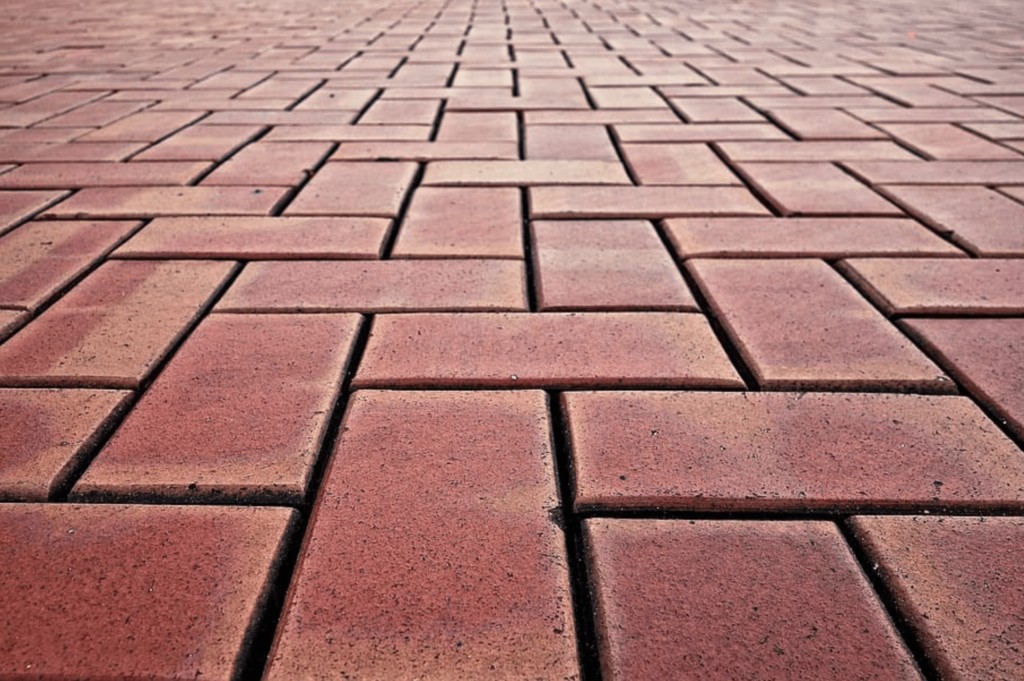
Clay brick pavers are a popular option for homeowners looking for a timeless and sophisticated look for their outdoor living space. Brick pavers are made from natural materials and are well-known for their durability, making them an excellent choice for outdoor projects.
One of the most notable characteristics of clay brick pavers is their ability to resist stains, meaning they maintain their natural color and texture over time. This durability also makes brick pavers a preferable option to withstand different weather conditions. Brick pavers require minimal maintenance, which adds to their cost-effectiveness, making them an ideal choice for homeowners who want long-lasting results without frequent upkeep.
When it comes to pricing, clay brick pavers are a relatively affordable option compared to natural stone pavers. The average cost per square foot for clay brick pavers ranges from $5 to $15. However, installation fees should also be taken into consideration, as they usually amount to between $10 to $20 per square foot. The final cost will depend on the size, design, and complexity of the installation project.
Brick pavers are a popular choice among homeowners because of their unique design options. They come in various colors, sizes, and designs, giving homeowners extensive freedom to customize their outdoor projects. Brick pavers also offer a classic and timeless look for outdoor living spaces, adding to their popularity among homeowners.
In conclusion, clay brick pavers are a cost-effective option for homeowners seeking a unique and elegant design choice. Their staining resistance and durability make them ideal for outdoor projects, as they require minimal upkeep. Brick pavers’ affordable pricing and diverse design options make them an excellent choice to enhance the curb appeal of any property.
Concrete Slabs
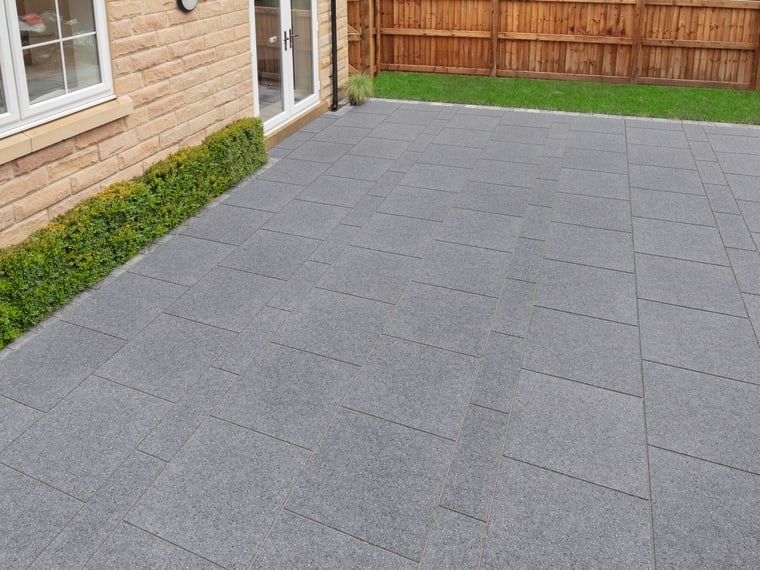
Concrete slabs are a common choice for homeowners looking to create a patio. They offer various advantages and disadvantages, making them a suitable option for certain projects. Poured concrete is the most popular type of concrete slab available, but stamped concrete is a decorative alternative that can add texture and design to the surface.
One significant advantage of concrete slabs is their durability. They can withstand extreme weather conditions, including moisture, heat, and cold. Additionally, concrete slabs require very minimal maintenance, making them a cost-effective option for homeowners. They also provide a flat and wide surface, which is ideal for outdoor furniture and entertainment.
However, concrete slabs also have some disadvantages. The surface can become too hot to walk on in direct sunlight, making it uncomfortable during the summer months. Additionally, the color of the concrete slab may fade over time and may have limited design options without adding a decorative finish.
When it comes to pricing, poured concrete is typically the most affordable option, with an average cost of $4 to $8 per square foot. However, stamped concrete can come at a higher cost, with an average of $8 to $20 per square foot, depending on the design complexity. The thickness of the slab and other factors such as labor and finishing costs also impact the overall price.
One common issue with concrete slabs is poor drainage, which can lead to water buildup and erosion. It is important to ensure that proper drainage systems are installed to avoid these problems. Additionally, concrete slabs can become uneven over time, leading to tripping hazards and the need for repairs.
In conclusion, concrete slabs offer various advantages and disadvantages for patio construction. Poured concrete is the most common option, with stamped concrete providing a decorative alternative. The cost varies based on factors such as slab thickness, type, and complexity, while drainage and uneven surfaces can pose problems over time. Homeowners should weigh the pros and cons of concrete slabs before selecting them as their choice of material.
Average Cost for 20×20 Patio
If you’re considering building a new outdoor living space, you may be wondering about the average cost of a 20×20 patio. The total price tag for your project will depend on several factors, including the materials used and your chosen design.
One of the most significant considerations that affect the cost of a patio is the material used for its construction. Some of the most popular options include clay brick, natural stone, and concrete pavers. Each of these materials has a different cost associated with it.
Clay brick is a durable and popular option that can provide a classic, rustic look. The average cost for clay brick pavers ranges between $10 to $20 per square foot. On the other hand, natural stone like flagstone is a more expensive option, with an average cost of $15 to $30 per square foot. Concrete pavers are the most affordable option, with an average cost of $6 to $10 per square foot.
Besides the cost of the materials, the intricacy of your design and factors such as labor costs and geography must be considered. This is because different regions have different labor rates, and the patio’s size and shape may influence the total cost. Building a custom-tailored design with a complex pattern can also add to the overall price.
If you’re wondering about the national averages for a 20×20 paver patio, prices can vary from $800 to $5,000. However, this range can change significantly based on the variables I mentioned above.
In conclusion, the average cost of a 20×20 patio can rely on multiple factors. While clay brick, natural stone, and concrete pavers are popular material choices, their prices can vary depending on their quality and design complexity. Understanding the potential costs involved can help homeowners make an informed decision about what type of patio to construct.



